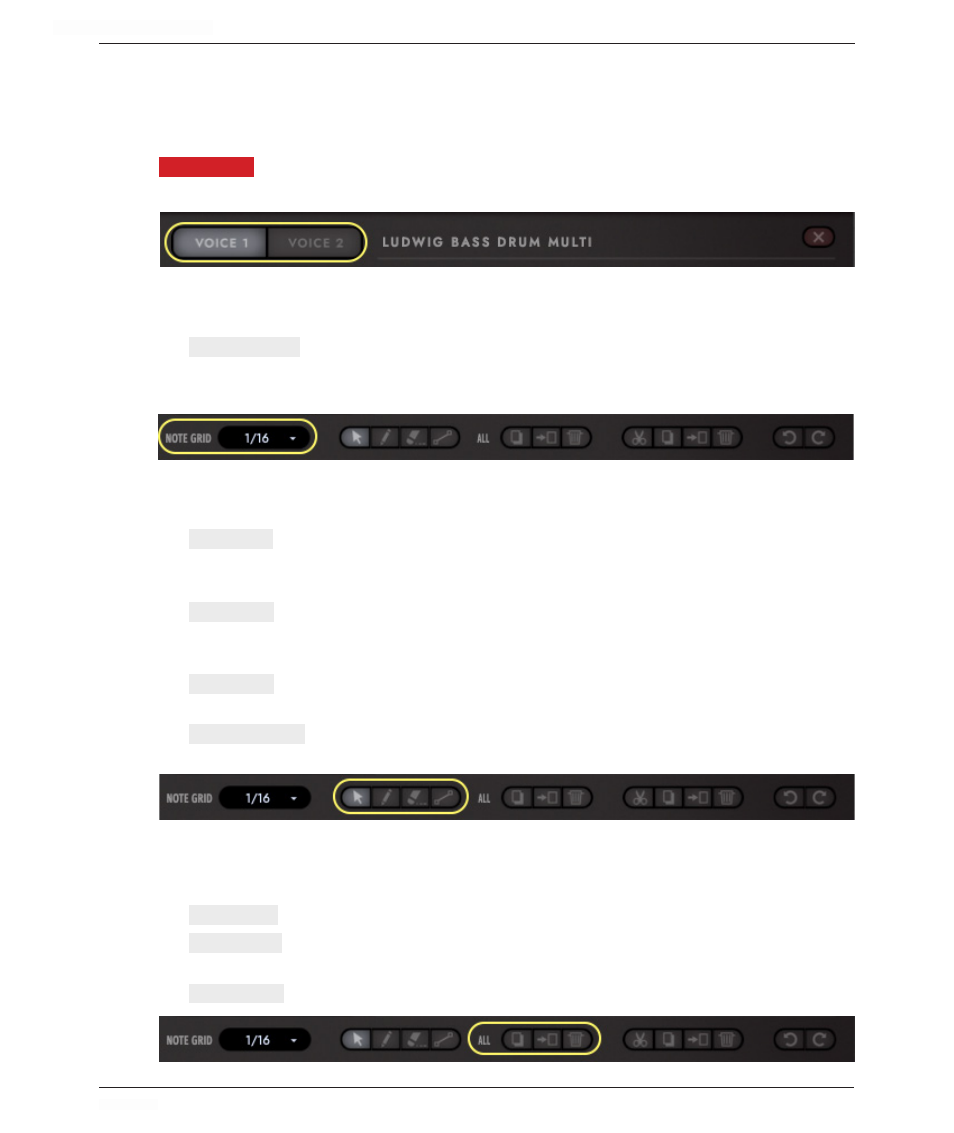EastWest Hollywood Orchestra Opus Edition Virtual Instrument Plug-In (Download) User Manual
Page 177

HOLLYWOOD ORCHESTRA OPUS EDITION
<
CHAPTER 5: PERFORM
177
<
Two Voices Per Instrument
The sequencer supports two voices, meaning the note selection can distribute up to
two different notes, that can have different rhythms, step values and velocity data,
while still sharing the same MIDI CC automation curve.
PLEASE NOTE:
Legato instruments, and any Arranger Modes that only forward a single
note (like the “All Notes” Arranger Mode), only utilize Voice 1.
Sequence Note Grid
Set the Sequencer Grid to a note sub-division.
•
NOTE GRID
MENU:
sets the note sub-division of the Sequencer Grid. Available sub-
divisions include: 1/4, 1/8, 1/16, 1/32, 1/64. Available triplet sub-divisions
include: 1/4T, 1/8T, 1/16T.
Sequence Editing Tools
The main editing tools for changing note regions in the Sequencer Grid.
•
ARROW
TOOL:
click to select a single note regions, click and drag to highlight mul-
tiple note regions, and grab the edges of a note region to extend its length by the
sub-division selected in the Note Grid menu.
•
PENCIL
TOOL:
draw in new note regions with a length determined by the sub-division
selected in the Note Grid, or New Note duration menus. The pencil tool is also
used to draw free-hand automation in the CC 1 Controller Lane.
•
ERASER
TOOL:
select this tool to erase note regions by clicking on them, or click and
drag to remove multiple note regions.
•
AUTOMATION
TOOL:
select this tool to draw a straight line of automation in the CC 1
Controller Lane (as opposed to the free-hand method using the pencil tool).
Copy, Paste, and Trash (All)
The copy, paste, and trash (all) commands apply to all the sequence data from an
Instrument Slot (including both Voices 1 and 2).
•
COPY
BUTTON:
copy all the sequence data of an Instrument Slot.
•
PASTE
BUTTON:
remove existing sequence data in an Instrument Slot, and paste new
sequence data from the clipboard.
•
TRASH
BUTTON:
remove all the sequence data of an Instrument Slot.
